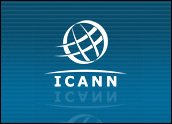
Today’s hot topic is Google and the search-engine ranking of brand identities.
All businesses, whether big or small, are trying to dominate the accessibility of their corporate images and brand names, mostly via cyber mediums, fluid Web sites, new cyber branding and digital domain name management techniques.
For this reason, cyber-image corporations like Yahoo, Amazon, E-Trade, Google, eBay and millions of others worldwide do not conjure up the images of overpowering logos on skyscrapers, specific designs with color identities, taglines with gigantic billboards or repetitive visual advertising campaigns. Rather, they are almost invisible in the traditional corporate identity arena.
These newly emerging cyber giants are quietly working and residing in our laptops and other gadgets snug and warm in our pockets. And who knows if these are the same companies that crawl out from our computers in the middle of the night and wash up our dishes, too. Today, corporate accessibility is built for global cyber economies using search-engine techniques as a new standard because it is fast, user friendly and extremely cheap.
Bigger Image Seems Sluggish
Big business images of the past were of status- and symbol-driven corporations projecting their powers. They plastered their names and logos at every corner, offered a limited-access, 9-to-5, Monday-through-Friday format while appearing formal, boring and, at times, unaffordable.
But in cyber-identity domination, a corporation provides interactive, 24-7, user-friendly service that focuses on being extremely economical and on constantly emulating a corporate presence in a viral formation. Today, the bigger the image, the more sluggish and unreliable it appears.
Cyber corporations, under the new rules, are developing sophisticated Web presence and working on global portalization of the entire corporation. In this major shift, there is a serious decline of the traditional collateral material thatcorporations produced under the old rules of corporate identities, intricate brochures, thick catalogues and colorful annual reports.
Rather, all imaging and information is being transferred to user-friendly, sophisticated, fluid sites — where information changes constantly and services are available at bullet speed. Corporations that are small, agile and have open access are now the winners.
Custom Information
Corporations practicing the old corporate identity rules were absolutely convinced that the entire globe was their potential target audience. In every instance, these corporations used general broadcast and shotgun methods to relay their messages — including skyscrapers, billboards and bulky brochures, all addressing the “global occupant.”
Now, cyber domination provides custom information to a select, potential client base located in specific demographics worldwide. The message is highly pertinent, clear, precise and user-friendly, offering instant results. Selected and targeted messages get the results.
In the old strategy, the key to success was in the total image, including the logo design and color. The name of a corporation was not the key issue, but rather a part of an advertising jigsaw puzzle. All the emphasis was placed on the visuals: logo, specific colors and graphic designs, tag lines and other paraphernalia, to create a total visual-identity experience.
The rule of cyber domination is very different. It all boils down to a powerful name that makes for a powerful URL, which is then used as a key to find and unlock the Web site in a complex global maze. It is all based on how well you can remember the name, how easily you can type it, how to find the corporation right up front on a search engine, and how to get instant accessibility.
Traditional Branding
Traditional print- and design-driven branding is dying.
This is a very big change and has created a noticeable shift in how companies build global corporate images in cyber space. This shift also explains the sudden meltdown in traditional advertising agencies, as well as advertisers’ confusion regarding cyber marketing.
In today’s corporate world, the key to success, or the “magic,” clearly lies in the name — a URL to set the company apart in the global e-commerce arena.
Let’s face it. When a name cannot be found easily on the Internet, the corporation is no longer in cyber domination — rather, it is in cyber oblivion.
Symptoms of cyber oblivion include when a name is lost in the crowd and doesn’t ring cash registers; when a name is too old fashioned and doesn’t convey today’s dynamics; when the spelling of a name requires a higher IQ or more money is spent in explaining the origin of the name; when a corporation does not own a trademark or an identical dot-com name; when the name is embarrassing in certain countries; when the name is too long, too difficult, too confusing, too complicated.
All or any of the above will simply sink great projects, great ideas and keep the corporate branding in oblivion.
Naseem Javed, author Naming for Power and alsoDomain Wars, is recognized as a world authority on global nameidentities and domain issues. Javed founded ABC Namebank, aconsultancy he established a quarter century ago, and conducts executiveworkshops on image and name identity issues. Contact him at [email protected].




















































Social Media
See all Social Media